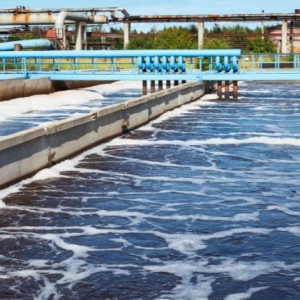The India fish market is undergoing significant growth, driven by increasing domestic demand for seafood, rising health awareness, and evolving consumer preferences. With a rich coastline, diverse aquatic resources, and a robust fishing industry, India has long been a major player in the global fish trade. As of 2025, the country continues to show promise for the expansion of its fish market, both domestically and internationally.
With rising incomes, changing dietary habits, and a growing focus on protein-rich diets, fish has become an essential part of Indian cuisine. This blog delves into the key trends, growth drivers, challenges, and future outlook of the India fish market, offering valuable insights into the sector’s evolving landscape.
Market Overview: India’s Fish Market Landscape
India is the second-largest producer of fish in the world, with a significant portion of its production coming from inland and marine fisheries. The fish market in India is segmented into freshwater and saltwater varieties, with popular species like tuna, tilapia, hilsa, and prawns leading the demand. The domestic consumption of fish continues to grow, particularly in regions where seafood is a staple food. Additionally, India's increasing fish exports to global markets have contributed to its strong presence in the international seafood trade.
India’s fish market includes a wide range of products, including fresh fish, frozen fish, dried fish, and value-added products like fillets, fish oil, and fish-based snacks. In 2025, the demand for fish is expected to increase across all segments, driven by factors such as urbanization, rising awareness about healthy eating, and government initiatives to boost the seafood industry.
Key Growth Drivers
1. Rising Demand for Protein-Rich Diets
As consumers become more health-conscious, protein-rich foods like fish are gaining popularity as an alternative to red meat and poultry. Fish is seen as a healthier source of protein, offering lower fat content and a higher level of essential nutrients such as omega-3 fatty acids. The growing awareness about the health benefits of seafood is one of the major factors driving the demand for fish in India.
-
Health Consciousness: Fish is considered a heart-healthy food, and its increasing popularity in fitness and wellness circles is driving demand.
-
Nutritional Benefits: Consumers are increasingly aware of the importance of omega-3 fatty acids for brain function and heart health, which is further fueling fish consumption.
2. Expanding Middle-Class Population
India’s expanding middle class, coupled with increasing urbanization, is leading to higher disposable incomes and changing food consumption patterns. As a result, there is a growing appetite for premium and convenient food options, including fish. With more people adopting modern lifestyles and eating out more frequently, seafood is becoming an increasingly common choice in households and restaurants across the country.
-
Rising Disposable Income: As income levels rise, consumers are more likely to spend on nutritious, higher-value food products like fish.
-
Urbanization: The urban population, with better access to supermarkets and online seafood delivery services, is driving the market for packaged and frozen fish.
3. Growing Awareness of Sustainable Fishing Practices
Sustainability has become an important issue in the global food industry, and the fish market in India is no exception. With the depletion of fish stocks in the wild, there is a growing emphasis on sustainable aquaculture practices. The Indian government and industry players are promoting responsible fishing methods, such as fish farming, to ensure the long-term availability of fish.
-
Aquaculture Growth: The Indian government has been promoting aquaculture as a sustainable method to meet domestic demand while minimizing pressure on wild fish populations.
-
Sustainable Practices: Consumers are increasingly interested in sustainably sourced fish, leading to a rise in demand for certifications like the Marine Stewardship Council (MSC) for seafood products.
4. Increased Fish Exports
India’s fish market is not only driven by domestic consumption but also by its growing presence in international seafood trade. The country is one of the world’s largest exporters of fish, with key markets including the United States, the European Union, and Southeast Asia. Indian seafood products like shrimp, prawns, and fish fillets are highly sought after globally due to their quality and affordability.
-
Global Demand: India's exports of fish and seafood products continue to grow, driven by the high demand for shrimp and other seafood in international markets.
-
Government Support: The Indian government has been providing incentives to boost seafood exports, including setting up export hubs and improving processing standards.
5. Technological Advancements in Fish Processing
Advancements in fish processing technology are making it easier to preserve and distribute seafood products across a wider market. With innovations such as vacuum packaging, improved freezing techniques, and advanced logistics, fish products are now more accessible to consumers in remote areas and international markets. These technological improvements have also made it easier for consumers to buy high-quality fish that retains its freshness.
-
Frozen and Packaged Fish: The demand for frozen and packaged fish products is rising due to better storage technologies and greater convenience for consumers.
-
Improved Shelf Life: Advances in packaging technologies have extended the shelf life of fish products, allowing for more efficient distribution and fewer losses.
Challenges in the India Fish Market
1. Supply Chain Issues and Infrastructure Gaps
One of the major challenges facing India’s fish market is the inefficiency of the supply chain. Fish is highly perishable, and improper handling and transportation can lead to significant losses. Additionally, there is a lack of adequate cold storage infrastructure in some parts of the country, which affects the availability of fresh fish in remote areas.
-
Cold Storage Infrastructure: The need for more cold storage and refrigeration units is critical to reducing post-harvest losses and ensuring fish products remain fresh.
-
Logistical Challenges: Inadequate transportation networks and cold chain management systems pose challenges for the smooth distribution of seafood across the country.
2. Overfishing and Sustainability Concerns
Despite the growing adoption of sustainable fishing practices, overfishing remains a concern in some areas. Unsustainable fishing practices can lead to depletion of marine resources and negatively affect fish stocks. Ensuring that fishing operations adhere to regulations and best practices will be crucial for the long-term health of the industry.
-
Regulation and Compliance: Enforcing sustainable fishing practices and ensuring compliance with international regulations will be key to sustaining the industry.
-
Eco-Friendly Aquaculture: Encouraging eco-friendly aquaculture practices can help mitigate the environmental impact of fish farming.
3. Competition from Imported Fish
While India produces a substantial amount of fish, the country also faces competition from imported fish. These imports often come at a lower price point, which can make it difficult for domestic producers to compete. To counter this, the Indian fish market must focus on improving product quality and meeting consumer demands for fresh, sustainable options.
-
Price Competition: Imported fish, particularly frozen fish, can be more affordable, which poses a challenge for local producers.
-
Quality and Freshness: Ensuring high standards of quality and freshness in domestic fish products can help differentiate them in the market.
Future Outlook: What’s Next for the India Fish Market?
The future of the India fish market looks promising, with steady growth driven by technological advancements, rising consumer demand for healthy food, and increasing investments in sustainable practices. As the market continues to evolve, there will be an increased focus on improving infrastructure, supporting sustainable fishing, and expanding export opportunities.
FAQs
1. What are the main drivers of growth in the India fish market?
Key drivers include rising demand for protein-rich diets, expanding middle-class populations, sustainable fishing practices, increased fish exports, and technological advancements in processing and packaging.
2. What types of fish are most popular in India?
Popular types of fish in India include tuna, tilapia, hilsa, prawns, and various freshwater fish species.
3. How is technology improving the fish market in India?
Technological advancements in fish processing, packaging, and transportation are increasing product availability, extending shelf life, and improving the overall quality of fish products.
4. What challenges does the India fish market face?
Challenges include supply chain inefficiencies, inadequate cold storage infrastructure, overfishing concerns, and competition from imported fish.
5. What is the future outlook for the India fish market?
The future of the India fish market looks strong, with growth driven by demand for healthy seafood, government support for sustainable fishing, and expanding export markets.











